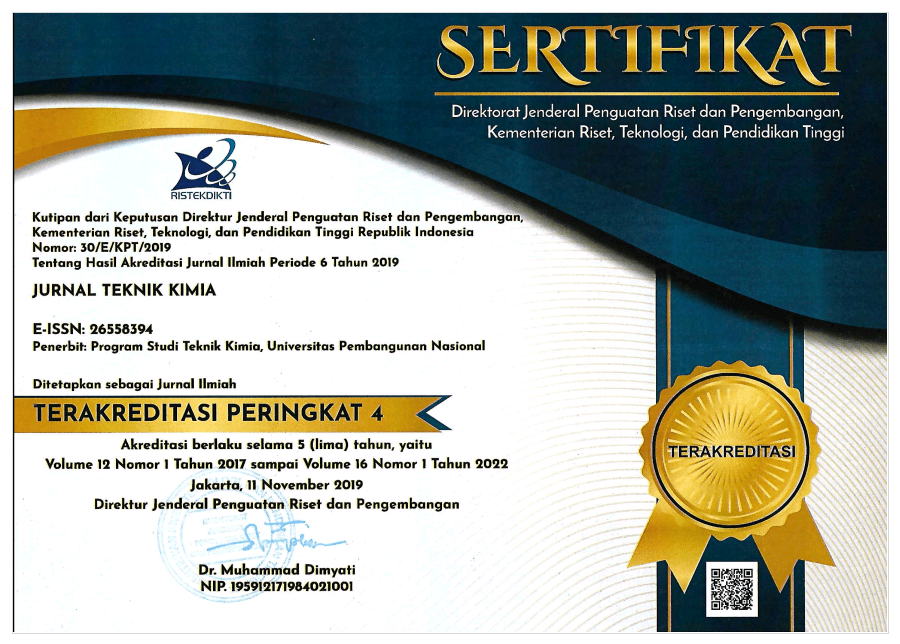SIMULASI ALIRAN GAS-SOLID-LIQUID DALAM BIOREATOR MEMBRAN TERENDAM
Abstract
Hydrodynamics characteristic for the mixing of gas-solid-liquid in membrane bioreactorsubmerged (MBRs) and its influence on mass transfer was studied computationally at various solid concentration, incoming gas rate, and the baffle distance. Computational method was conducted by using software GAMBIT 2.1.6. for the making of the grid which represents the calculation domain and conduct the simulation using CFD software FLUENT commercial code 6.2.16. The calculation result was recorded after the iteration reach the certain convergence level.Multiphase flow in reactor was simulated with mixture model, while to model the turbulence characteristic of the flow standard k-ε model was used. The geometric system studied is bioreactor in the form of box with flat bottom, 2 baffles, submerged hollow fiber membrane and air passage at the bottom of the reactor. For the membrane modeling, it is used two approaches
that is membrane as black box and membrane as porous media. The liquid used is water, and the solid is activated sludge, and air acts as gas phase. The result indicates that gas-solid-liquid system with the nearest baffle location from the membrane cause, the liquid dispersion process goes faster, so that fluid in the tank can be mixed perfectly and it can increase the gas-liquid mass transfer rate and the flux at MBRs.The increase of the solid concentration does not significantly affect the change of gasliquid mass transfer rate and flux through the membrane, but the increase of air flow rate can increase the gas-liquid mass transfer and the flux. Porous media approach give the prediction of the gas hold up distribution more over all than black box approach. The position of baffle 9 cm from tank wall is the best position viewed from the balance between the of air flow with the circulating fluid flow. Considered from the solid distribution, double inlet MBRs is better compared to that of single inlet. Flux obtained does not show significant difference. From both approaches of the membrane model, membrane model as porous media give the simulation results closer to the experimental data.Keyword:
MBRs, hydrodynamic, simulation CFD, gas-solid-liquid
This work is licensed under a Creative Commons Attribution 4.0 International License.
Pusat Publikasi | Teknik Kimia | Fakultas Teknik (Gedung Giri Reka ) | Universitas Pembangunan Nasional "Veteran" Jawa Timur, Indonesia
Jln. Raya Rungkut Madya, Gunung Anyar Surabaya, 60294 Email : jurnaltekkim@upnjatim.ac.id








